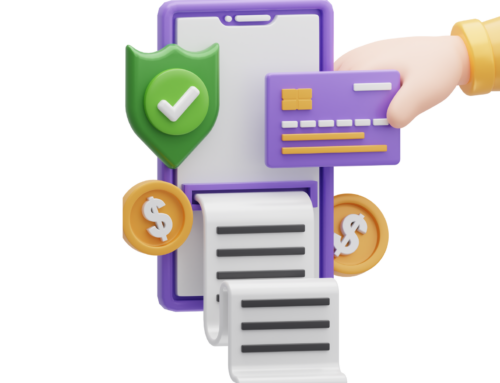The total amount of these transactions is expected to reach $1.82 trillion by 2024. So, credit card receipts will make up a big part of the invoices for businesses.
If you own a business, you also know how quickly signed receipts can pile up. You might want to get rid of them quickly, but you shouldn’t. Then comes the question of how long you should keep your credit card receipts. Here is everything that businesses need to know about how long they should keep things, how to store them properly, and how to get rid of them. Let’s check to see if you’re handling it the right way.
How long should you keep credit card receipts from customers, and why?
Because receipts are “proof of sale,” businesses need to keep them for two main reasons. Because of these two things, you should also know how long you should keep the receipts.
1) Fighting Chargebacks with Disputes
Everyone knows that banks let their customers ask for chargebacks. A merchant must also know that the time they have to file for these chargebacks can be anywhere from 60 days (two months) to 540 days (eighteen months), depending on the issuing bank as well as the firm that manages the credit card.
In the event of a disagreement, the signed receipts show that the customer agreed to the purchase. The receipt shows that you were given the card that you used to enter all of their personal information into your POS terminals. The money wasn’t sent to the merchant account until after that. The bank can then compare the signatures on the receipt to the ones they have on file for their customers. If the numbers match, that shows that the card holder knew the purchase was made.
2) Back claims for tax refunds
Receipts are bills that prove that the sales in question happened. If the IRS looks into your business, it is very likely that you will be asked to show proof of a suspicious transaction. Depending on where you do business and the tax laws in your area, the IRS may have different rules for you to follow. But it’s a good idea to keep signed receipts for three years.
Imagine that you are being audited and you don’t have any receipts. In that case, it will be hard for you to explain the money you made from certain transactions, any information about them, and the tax return you filed afterward. In the worst case, you might be dealing with a case of tax fraud.
The Strange Case of Storing and Managing Credit Card Receipts
Your company knows how important it is to keep signed receipts and is ready to do it. But there are a few things you should remember about how to store and handle credit card receipts.
1) Store carefully
Care should be taken when putting these receipts away. Why?
Keeping customer information safe
Credit card receipts aren’t just “proof of sale.” They also have sensitive information about the customer, like their name, the last four digits of their card number, the name of their bank, and their signature. These are private records that the law says must be kept safe.
How to Keep from Losing Money
Aside from privacy concerns, poor storage of credit card receipts can lead to financial information being shared with people who didn’t ask for it. This can put customers at risk of having their money stolen, which can lead to lawsuits and a loss of reputation for the business. If a small business doesn’t have the money to fight these claims, it could even close.
2) How do I store and get rid of my receipts?
Since receipts contain personal and financial information, the government has rules about how to store and throw them away.
- Physical
The receipts are hard to store because there are so many of them and they are fragile. They should be locked in a room or cabinet. These records can only be seen by people who are allowed to. Also, you need to make sure that the credit card receipt hasn’t been damaged by fire, water, or anything else.
Businesses should either shred the receipts all the way through or burn them to get rid of them. Even though it sounds simple, it is hard for a company, especially a small one, to put so many resources into keeping track of one type of transaction. Before deciding how to store their receipts, businesses should think about these things.
- Digital
Businesses must make sure that receipts are stored in an encrypted format for digital storage. Access to these files must be limited, just like storage space.
A program must permanently delete the digital credit card receipt before it can be thrown away. It’s important to know that platforms like Wellybox can store all your digital receipts in an encrypted format for years. A Google-approved partner looked at how we handle privacy and security. With the touch of a button, Wellybox can get rid of all the chosen receipts when you want to.
Make Credit Card Receipt Management Simpler
Cards make the process of selling very easy. But most businesses don’t realize how important the last part of the payment ecosystem is: managing the receipts. If you don’t store things properly, you put your business at risk for many things, such as a breach of business information, lost revenue, long legal battles, loss of reputation, and more.
Using a credit card is easy when you use software like Wellybox. You can keep all of your receipts in one place, stop worrying about data security, pull up past receipts right away, settle disputes quickly, and delete them with the click of a button.
The number and frequency of card payments will only go up as time goes on. So, you can either find a bigger place to store your receipts or switch to a smarter, easier way to do it.
Read More: Receipt Organizer Software Products On The Market








